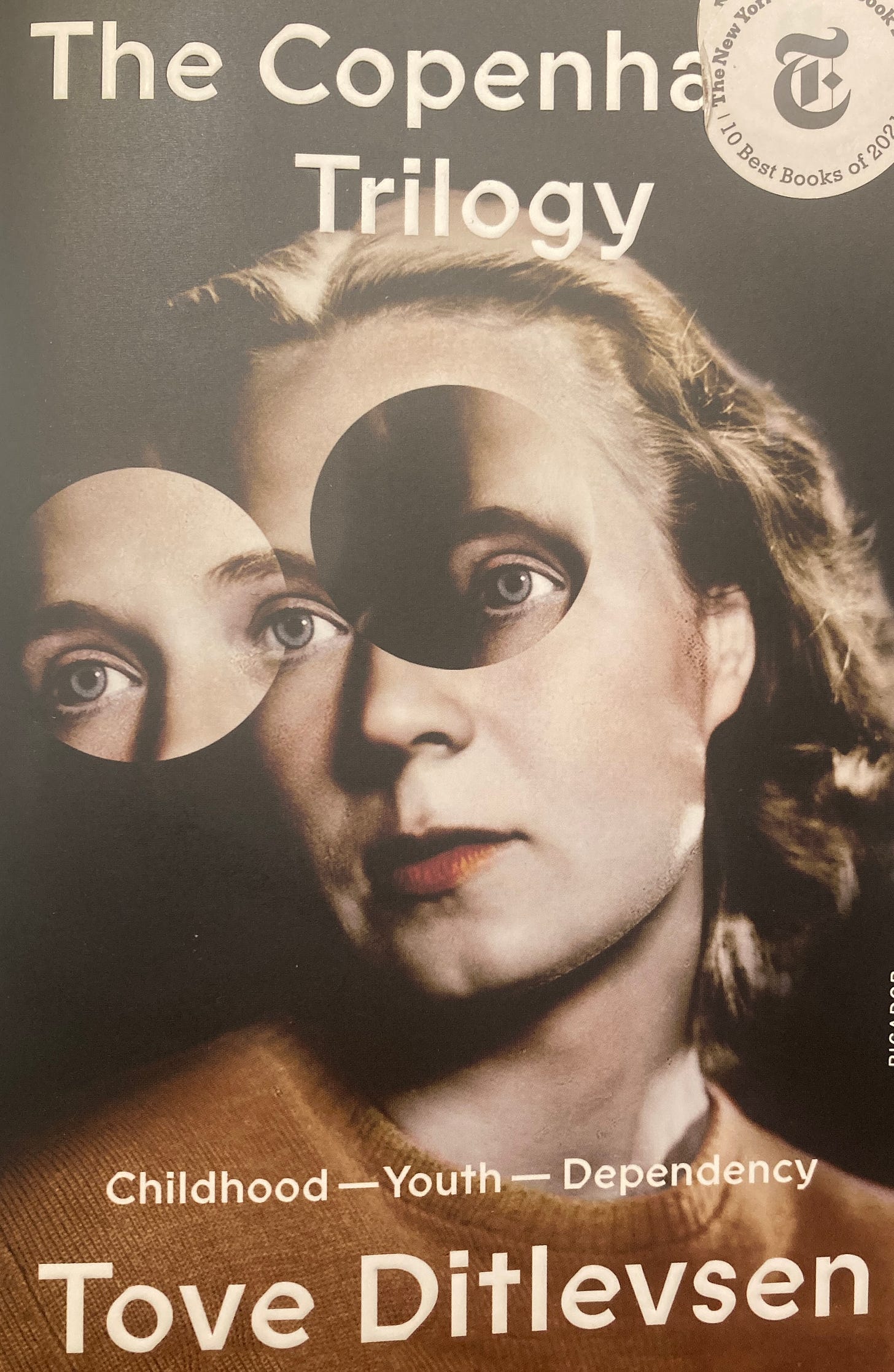Where do sentences come from?
In her memoir trilogy, The Copenhagen Trilogy, Danish writer Tove Ditlevsen talks about how her brain was overtaken by sentences at a young age. She talks about how she’s happiest only when she’s writing. The escape makes sense — in her youth, she lives in poverty with a domineering mother and a mostly clueless father. She has to work a lot of shit jobs and then has a series of horrible husbands, one of whom gets her addicted to Demerol and methadone. Somewhere along the way, the Nazis occupy her city, too.
Yet somehow her sense of humor and lust for writing stays intact. And she continues to make sentences.
She uses these vast sentence-making capabilities to bring 1920s-30s Copenhagen to life. She is a sharp, concise writer, able to pack everything into just a few pages. Compression and precision. Things happen quickly, yet everything still feels full and alive.
There is much to say about womanhood, poverty, class and her artistic and sexual awakenings in The Copenhagen Trilogy. But let’s set aside the macro for a moment and focus on the micro, which is where the story is told. It’s almost by accident she connects with bigger themes. She’s telling her story from the inside out, not from the outside in. Her life story teems with memorable characters. I’ve chosen just a few she introduces us to in the course of the memoirs:
Dad
Down in the bottom of my childhood my father stands laughing. He’s big and black and old like the stove, but there is nothing about him that I’m afraid of. Everything that I know about him I’m allowed to know, and if I want to know anything else, I just have to ask. He doesn’t talk to me on his own because he doesn’t know he what should say to little girls. Once in awhile he pats me on the head and says, “Heh, heh.” (Pg. 7)
I think we all feel like our childhood is down somewhere beneath us, although I suppose it doesn’t have to be. It could be above us or to the side of us for all I know. But the pull of inertia into the past feels downward. She compares her father to a stove — a weighty, inanimate object, unfeeling though useful. And like many fathers of previous generations, his role was to work and provide, read the newspaper and complain, not talk to children. So he doesn’t know what to say to them. Just pats them on the head.
Mr. Jensen is a boy she meets at a nursing supply company.
I have to be at work at seven o’clock in the morning and, with Mr. Jensen, I clean the rooms and put them in order before the office personnel and the director arrive. Mr. Jensen is sixteen-years-old, tall and thin and silly. He blows up condoms and lets them fly around over my head while I’m washing the floor, and he tries to kiss me so that, laughing, I have to defend myself with the rag in one hand. He’s just a boy, and I’m not offended by his coarseness. (Pg. 128)
Go to any McDonald’s or Taco Bell just before closing and you will see teen workers acting similarly goofy when it gets slow. We’ve all had terrible jobs that are only tolerable with a serious amount of messing around. But with Tove, everything light and airy and comical quickly turns slightly dark, starting with her having to defend herself from the boy’s romantic advances. It gets worse from there — not with the boy, but with the director of the warehouse.
Nazi landlady
My landlady is big and heavy. She has wild bleached hair and a dramatic demeanor, as if something catastrophic is about to happen any minute. In the living room there hangs a big picture of Hitler. “Look,” she said when I rented the room. “Isn’t he handsome. Someday he’ll rule the whole world.” She’s a member of the Danish Nazi Party and asked me if I wanted to be a member, too. I said no, I didn’t have any sense for politics. And it’s none of my business what she’s like. The main thing is that the room is cheap. (pg. 185)
This landlady is an outrageous character with outrageous beliefs — such as her love of Hitler. I was skimming another memoir recently where he was described as looking like turnip. I’m not sure which class of root vegetable the landlady is (rutabaga perhaps?), but we’ve all met a character like her with big, loud beliefs. (For the record, big and loud beliefs are rarely good).
There is so much more to say about The Copenhagen Trilogy — and I’ll get to more later. There is sharp humor followed by darkness; irony mixed with sadness. Hope among the suffering. But instead of telling us how she feels, Tove presents us with these sharp characters, the engaging situations, to show us how her truth unravels in the present tense.

